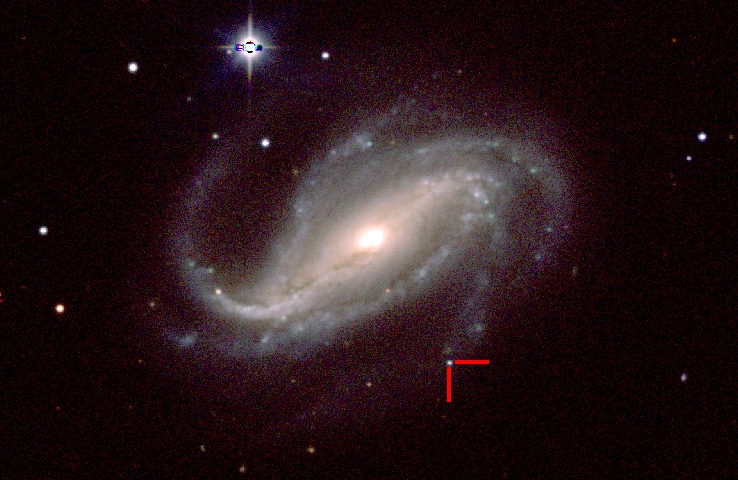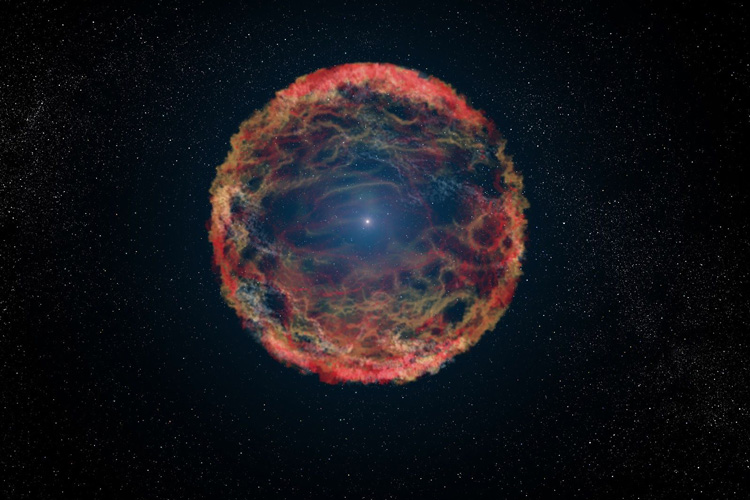-
UC Berkeley graduate student awarded Department of Energy fellowship
September 14, 2018
James Sullivan, a doctoral candidate at the University of California, Berkeley, has been awarded a Department of Energy Computational Science Graduate Fellowship (DOE CSGF) to support his research into Astrophysics. Sullivan, from McLean, VA, has bachelor’s degrees in Astronomy, Mathematics, and Physics from the University of Texas at Austin. Fewer than 6 percent of applicants are chosen for the fellowship each year.
More -
AI helps track down mysterious cosmic radio bursts
September 10, 2018
Artificial intelligence is invading many fields, most recently astronomy and the search for intelligent life in the universe, or SETI. Researchers at Breakthrough Listen, a SETI project led by the University of California, Berkeley, have now used machine learning to discover 72 new fast radio bursts from a mysterious source some 3 billion light years from Earth.
More -
Astronomy Congratulates Professor Eliot Quataert on being elected to the AAAS
April 19, 2018
The 1780 Charter of the American Academy of Arts and Sciences states that purpose of the Academy is "to cultivate every art and science which may tend to advance the interest, honor, dignity, and happiness of a free, independent, and virtuous people." AAAS Members have included John Adams, Benjamin Franklin, Thomas Jefferson, George Washington, Maria Mitchell, Alexander Graham Bell, Jonas Salk, John F. Kennedy, Martin Luther King, Jr., Aaron Copland, Charles Darwin, Albert Einstein, Winston Churchill, Laurence Olivier, Mary Leakey, Akira Kurosawa, and Nelson Mandela (to name a few). Nine UC Berkeley faculty have been elected to the American Academy of Arts & Sciences, a time-honored, prestigious society that convenes leaders in academic, business and government sectors to solve critical national and global challenges.
Tags:More -
Flash-in-the-pan supernovas explained
March 27, 2018
Most exploding stars flare brightly and then slowly fade over weeks to months, but an unusual group of supernovas noticed only in the last 10 years flare up and disappear within days. Thanks to the ability of NASA’s Kepler Space Telescope to precisely measure starlight over long periods of time, astronomers now have a pretty good idea what these flash-in-the-pan supernovas are: exploding stars probably too dim to be detectable until the stellar matter ejected during the explosion collides with a shell of material puffed off years earlier by the star.
More -
Amateur astronomer captures rare first light from massive exploding star
February 21, 2018
Thanks to lucky snapshots taken by an amateur astronomer in Argentina, scientists have obtained their first view of the initial burst of light from the explosion of a massive star. During tests of a new camera, Víctor Buso captured images of a distant galaxy before and after the supernova’s “shock breakout” – when a supersonic pressure wave from the exploding core of the star hits and heats gas at the star’s surface to a very high temperature, causing it to emit light and rapidly brighten.
Tags:More -
Puzzling new supernova may be from star producing antimatter
November 14, 2017
An exploding star that continued to shine for nearly two years — unlike most supernovae, which fade after a few weeks — is puzzling astronomers and leading theorists, including UC Berkeley astrophysicist Daniel Kasen, to suggest that the event may be an example of a star so hot that it produces antimatter in its core. Stars would have to be very massive to get this hot, Kasen said, which is why most astronomers assumed they existed, if at all, only in the early years of the universe.
Tags:More -
Selections Made for the JWST Director’s Discretionary Early Release Science Program
November 13, 2017
Following the recommendation of the Time Allocation Committee and a thorough technical review, the Space Telescope Science Institute (STScI) Director Ken Sembach has selected 13 science programs for the JWST Director’s Discretionary Early Release Science Program (DD-ERS).
Tags:More -
Astronomers strike cosmic gold
October 16, 2017
The first detection of gravitational waves from the cataclysmic merger of two neutron stars, and the observation of visible light in the aftermath of that merger, finally answer a long-standing question in astrophysics: Where do the heaviest elements, ranging from silver and other precious metals to uranium, come from?
Tags:More -
#MeasureEarth: a world-wide experiment to determine whether Earth is flat or round
September 18, 2017
Former graduate student Lauren Weiss (now a postdoc at the University of Montreal) has created a public experiment called “Measure Earth," in which ordinary citizens can measure the curvature of Earth at noon on Oct 24th. Read further to see how you can participate this worldwide experiment!
More -
How to Safely View the Eclipse: Tips from Professor Alex Filippenko
August 8, 2017
Anyone planning to observe the eclipse should obtain a pair of certified eclipse glasses (see American Astronomical Society recommendations). While the glasses should be removed during the couple of minutes of totality, they must be worn when looking at the eclipse leading up to and following totality, or when viewing the partial eclipse from outside the zone of totality. The total solar eclipse – the first visible from the continental U.S. since 1979 – will traverse the entire country in a band about 70 miles wide, beginning the morning of Monday, Aug. 21, on the Oregon coast and ending 90 minutes later, in mid-afternoon, off the coast of South Carolina. Many millions of people along the path of totality are expected to watch as the moon eclipses the sun, while even more outside the path of totality will see a partial solar eclipse.
More










